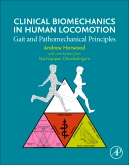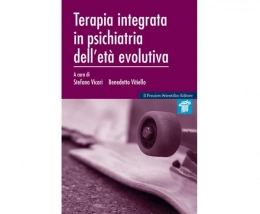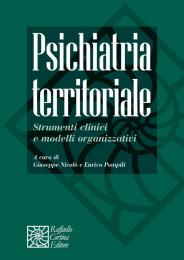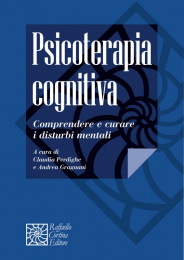Non ci sono recensioni
DA SCONTARE
|
Clinical Biomechanics in Human Locomotion: Gait and Pathomechanical Principles explores the clinical management of gait-disturbing or gait-induced pathologies and biomechanical variances during gait between individuals. The book discusses what is required to make terrestrial human locomotion safe and what causes pathology within a context of high locomotive and morphological variability. The interaction of genetics, epigenetics, developmental biology and physiology under the influence of locomotive biomechanics and metabolic energetics drives evolution. Such biological pressures on survival are essential in understanding the locomotive biomechanics of modern humans. In addition, lifestyle, including gait speed adaptability established during the growth influences of anatomical development is also considered. |
| Features: |
|
Chapter 1: Understanding Human Gait
Chapter Introduction
Section 1.1 Gait Principles
1.1.1 Introduction
1.1.2 Gait Energetics
1.1.3 Dividing the Body Segments to Explain Gait
1.1.4 Gait Motion and Description
1.1.5 Walking Gait Phases
1.1.6 Challenges of Upright Posture in locomotion
1.1.7 Human Gait Models
1.1.8 Describing Gait: Ranchos Los Amigos Divisions
1.1.9 Additions and Modifications to the Rancho Los Amigos Divisions
1.1.10 Section Summary
Section 1.2 Principles of Gait Analysis Data
1.2.1 Introduction
1.2.2 Stability and Ground Reaction Force (GRF)
1.2.3 Measurement and Interpretation of GRF
1.2.4 Vertical GRF Components in Walking
1.2.5 Anterior-posterior and Medial-lateral GRF Components in Walking
1.2.6 Spatiotemporal Parameters in Gait
1.2.7 Measuring Joint Segment Motions
1.2.8 Measuring and Interpreting Pressure
1.2.9 Variability in Gait
1.2.10 Section Summary
Section 1.3 Muscle Function Related to Joint Motion in Gait
1.3.1 Introduction
1.3.2 Principles of Muscle Action in Gait
1.3.3 Primary Muscle Function During Walking Gait
1.3.4 Soft Tissue Compliance and Stiffening of the Lower Limb
1.3.5 The Effects on walking of Terrain, Velocity, and Gradient
1.3.6 Muscle Activation and Dysfunction Effects on Gait Kinematics
1.3.7 Section Summary
Section 1.4 Running Gait
1.4.1 Introduction
1.4.2 Running Energetics
1.4.3 The Running Gait Cycle
1.4.4 Running Models: Work and Power Phases in Running
1.4.5 Impact in Running: With Consideration to Walking
1.4.6 Shock Attenuation in the Lower Limb
1.4.7 Muscle Activity in Running
1.4.8 Spine, Pelvis and Arm Motion in Running
1.4.9 Running Patterns
1.4.10 Running Differences through Gender and Age
1.4.11 Foot Types and Footwear Effects on Running
1.4.12 The Effects of Running Terrain
1.4.13 Section Summary
Section 1.5 Variance in Gait
1.5.1 Introduction
1.5.2 Gender and Other Morphological Differences in Walking Gait
1.5.3 Foot Function Variance in Gait
1.5.4 Joint Hypermobility in Gait
1.5.5 Gait and Pregnancy
1.5.6 Paediatric Gait
1.5.7 Ageing and Aged-Like Gait
1.5.8 Leg Length Discrepancy/Inequality
1.5.9 The Effects of Footwear on Gait
1.5.10 Gait in Lower Limb Amputees
1.5.11 Section Summary
Section 1.6 Gait in Disease
1.6.1 Introduction
1.6.2 Gait in Cerebral Palsy
1.6.3 Gait in Musculoskeletal Disease
1.6.4 Gait in Neurological Disease
1.6.5 Gait in Peripheral Vascular Disease
1.6.6 Gait in Diabetes (Mellitus)
1.6.7 Section Summary
Chapter 2: Locomotive Functional Units
Chapter Introduction
Section 2.1 SOFT AND HARD TISSUE AS FUCTIONAL UNITS
2.1.1 Introduction
2.1.2 Principles of Tensegrity and Biotensegrity Revisited
2.1.3 Maintenance of Biotensegrity Structures
2.1.4 Principles of Core Stability
2.1.5 Muscle’s Role in Stability-Mobility
2.1.6 Principles of Articular Motion and Stability
2.1.7 Concepts of Muscle-Joint Relationships
2.1.8 Concepts of Form and Force Closure
2.1.9 Concepts of Joint Packing, Congruency, and Neutral
2.1.10 The Skeletal Frame
2.1.11 Section Summary
Section 2.2 Functional Unit of the Lumbar Spine and Pelvis
2.2.1 Introduction
2.2.2 The Kinematic Role of the Lumbar Spine and Pelvis
2.2.3 The Spine and Pelvis as a Biotensegrity Structure
2.2.4 Functional Anatomy of the Lumbar Spine and Pelvis
2.2.5 Passive Soft Tissue of the Lumbar Spine and pelvis
2.2.6 Functional Joint axes and Load Distribution of the Lumbar Spine and Pelvis
2.2.7 Muscle Action at the Lumbar Spine and Pelvis
2.2.8 Adaptation and Pathology in the Lumbar Spine and Pelvis
2.2.9 Section Summary
Section 2.3 Functional Unit of the Hip
2.3.1 Introduction
2.3.2 The Kinematic Role of the Hip
2.3.3 The Hip as a Biotensegrity Structure
2.3.4 Osseous Topography of the Hip
2.3.5 Passive Soft Tissues of the Hip
2.3.6 The Hip in Lever Systems
2.3.7 Muscle Action at the Hip
2.3.8 Adaptation and Pathology at the Hip
2.3.9 Section Summary
Section 2.4 Function Unit of the Knee
2.4.1 Introduction
2.4.2 The Kinematic Role of the Knee
2.4.3 The Knee as a Biotensegrity Structure
2.4.4 Osseous Topography and Articular Structures of the Knee
2.4.5 Passive Soft tissues of the Knee
2.4.6 Anatomy of the Anterior Knee: Patellofemoral Joint
2.4.7 The Functional Joint Axes of the Knee in Lever Systems
2.4.8 Muscle Action at the Knee in Gait
2.4.9 Adaptation and Pathology in the Knee
2.4.10 Section Summary
Section 2.5 Function Unit of the Ankle
2.5.1 Introduction
2.5.2 The Kinematic Role of the Ankle
2.5.3 The Ankle as a Biotensegrity Structure
2.5.4 Osseous Topography of the Ankle
2.5.5 Passive Soft Tissues of the Ankle
2.5.6 Functional Axes of the Ankle
2.5.7 The Ankle in Lever Systems
2.5.8 Muscle Action at the Ankle
2.5.9 Extensor Muscles at the Ankle
2.5.10 Primary Flexor Muscles at the Ankle
2.5.11 The Other Plantarflexors of the ankle
2.5.12 Leg to Foot Rotations around the Ankle-Subtalar Complex and Lower Limb.
2.5.13 Adaptation and Pathology in the Ankle
2.5.14 Section Summary
Chapter 3: The Foot as a Functional Unit
Chapter Introduction
Section 3.1 The Foot’s Material Properties
3.1.1 Introduction
3.1.2 The Foot as a Biotensegrity Structure
3.1.3 The Mechanical Role of the Foot
3.1.4 The Role of the Foot Vault
3.1.5 The Foot as an Adjustable Multi-tied Viscoelastic Asymmetrical Expanded Conical Vault
3.1.6 Span Distance and Curvature Effects on Vault Stiffness
3.1.7 Stiffness and Pes Planus, Pes Cavus, and the ‘Normal’ foot Vault
3.1.8 Mechanical Constraints on the Foot’s Role
3.1.9 Section Summary
Section 3.2 The Foot’s Role in Gait
3.2.1 Introduction
3.2.2 The Function and Events of Heel-toe Walking
3.2.3 Achieving Heel Contact Compliance
3.2.4 Heel Fat Pad in Compliance
3.2.5 Muscle Action in Energy Dissipation Through the Foot
3.2.6 Energy Dissipation Through Wobbling Mass in the Lower Leg
3.2.7 The Skeletal Frame Vault in Foot Compliance
3.2.8 Transformation from Compliance to Stiffness
3.2.9 Terminal Stance Stiffing Mechanism
3.2.10 The influence of Foot Shape and Gait Speed on Compliance and Stiffening Events
3.2.11 The Foot in Modulating Viscous Spring-Damping in Running
3.2.12 Section Summary
Section 3.3. The Foot’s Functional Units
3.3.1: Introduction
3.3.2: The Role of the Cutaneous Soft Tissues and Plantar Fat Pads of the Foot
3.3.3: The Role of Passive Elastic Elements of the Foot
4.3.4: The Role and Anatomy of the Plantar Aponeurosis
3.3.5: The Function and Anatomy of the Muscles of the Foot
3.3.6: The Role of the Skeletal Frame
3.3.7: Divisions of the Skeletal Frame: Medial and lateral Columns
3.3.8: The Rearfoot as a Functional Unit
3.3.9: The Midfoot as a Functional Unit
3.3.10: The Tarsometatarsal and Intermetatarsal Joints as Functional Units
3.3.11: The Role of the Metatarsal Base to Head Orientations
3.3.12: The Metatarsophalangeal Joints and Digits as a Functional Unit
3.3.13: MTP Joints as a Stabilising Fulcrum
3.3.14: Section Summary
Chapter 4: Pathology Through the Principles of Biomechanics
Chapter Introduction
Section 4.1. Understanding Pathological Risk
4.1.1: Introduction
4.1.2: Patient Clerking
4.1.3: Pathomechanical Summation and Tissue Threshold
4.1.4: Activity Influence on Tissue Threshold
4.1.5: Alignment and Morphology in Tissue Threshold
4.1.6: Instantaneous Joint Axis Location
4.1.7: Features of Gait (Gait Determinants)




